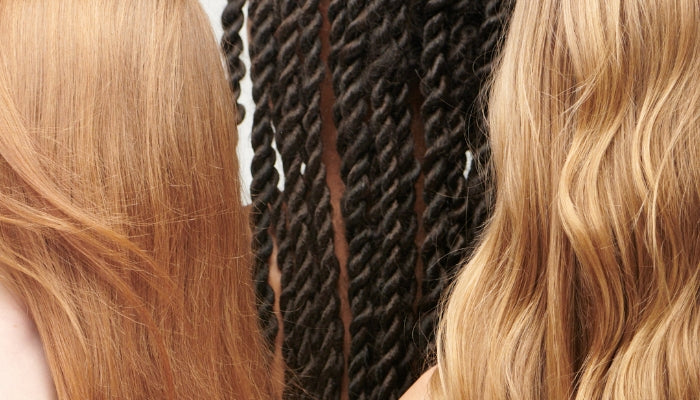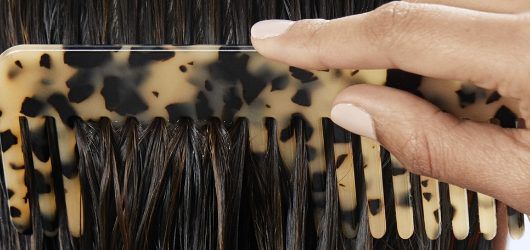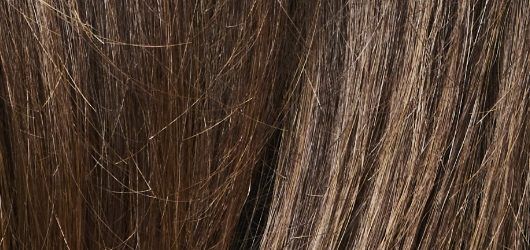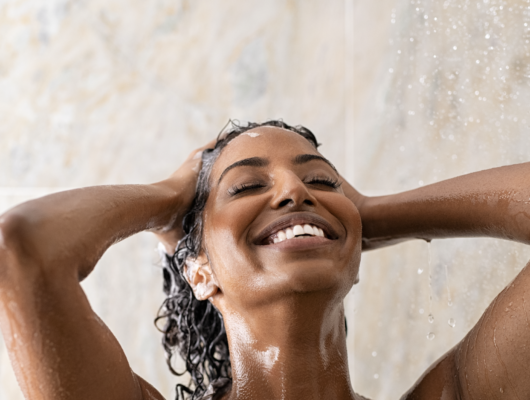How to Get Rid of Frizzy Hair: 15 Top Tips
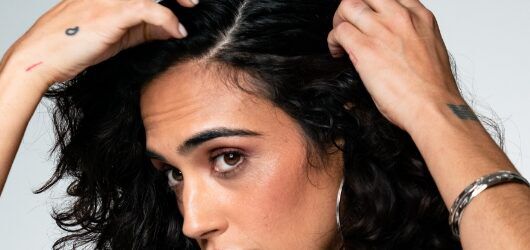
Whether your hair is fine and straight, thick and curly, or anything in between, odds are you’ve experienced frizz at some point.
Frizz occurs when neighboring hairs aren’t in sync — that is, laying in the same direction — causing them to look disordered.
Frizzy hair can be caused by a variety of things, from frequent styling or exposure to harsh chemicals to environmental factors or hair texture. Ultimately, frizz is the result of damage to the hair cuticle, which leaves the hair shaft exposed. When the cuticle is exposed, it can lose beneficial moisture and instead attract water molecules from the air. These molecules can then cause the hair shaft to expand, disrupting hydrogen bonds within and creating frizz.
Don’t let frizz stand in the way of a great hair day — read on for tips on how to get rid of frizzy hair, how to create a frizz-proof hair routine, and more.
How to get rid of frizzy hair
- Identify the root cause In almost all cases, the underlying cause of frizz is dehydration and damage to the hair cuticle — but this dehydration and damage can be caused by a variety of factors, including your environment, your genetics, your haircare routine, or some combination of the three. Although hydrating hair products can help fix frizzy hair, they may not be enough on their own; it’s important to take your particular root cause of frizz into account when developing your own frizz-fighting strategy. For example, if your frizz is the result of excessive heat styling, you might also want to consider taking a break from hot tools; if you live in a particularly humid climate, you might want to invest in a dehumidifier to remove excess moisture from the air in your home; and so on.
- Choose the right shampoo Sulfates — a salt compound that forms when sulphuric acid reacts with other chemicals — are a common ingredient in many shampoos, prized for their cleansing ability. However, sulfates can also strip hair of its natural oils, causing damage to the cuticle and increasing your risk of frizz. To fix frizzy hair, invest in a mild, sulfate-free shampoo, ideally one that includes ingredients to combat humidity and environmental damage. Find out how to choose the right shampoo for your hair type and texture >
- Deep condition your hair One of the leading causes of frizz is dry, damaged hair, often caused by harsh chemicals, dry air, or excessive heat styling. To combat frizz, you’ll need to restore the outer protective layer of your hair, known as the F-layer. The right conditioner should reduce friction and add emollients to dry, damaged hair, replenishing the F-layer. Using a weekly deep conditioning treatment such as Living Proof’s Restore Repair Mask can also give your hair the hydration it needs to eliminate frizz. To further tame frizz and create smooth, sleek hair, try pairing your weekly treatment with a leave-in conditioner, serums, or hair oils.
- Rinse with cold water Although a hot shower can be a great way to decompress, all that hot water is kinder to your body than it is to your hair. That’s because hot water lifts the hair’s cuticles and dissolves lipids — that is, your hair’s natural oils — leaving you prone to frizz and breakage. Though you may shiver at the thought, giving your hair a cold rinse toward the end of your shower helps reseal hair cuticles, trapping in beneficial moisture from your hair’s natural oils and any conditioning products you may use and leaving a hydrophobic layer that helps prevent frizz.
- Invest in a microfiber towel Microfiber towers are made from incredibly fine, manufactured polymer strands, which makes them far more absorbent than your typical terry cloth towel. This absorbency has a few frizz-fighting benefits — it can:
- Remove excess water from your hair after you shower without removing any conditioning products
- Eliminate the need to rub your hair to get it dry, reducing friction and breakage
- Shorten the amount of time it takes to dry your hair, reducing your exposure to hot tools
No matter which type of towel you use, microfiber or otherwise, avoid using aggressive friction — gently blotting your hair is best.
- Dry your hair — the right way When possible, it’s best to let your hair air-dry, as this reduces your exposure to heat tools and can prevent your hair from drying out; that said, with a busy schedule, it can be difficult to dedicate the time to air-drying. If you do need to blow-dry, there are a few things you can do to prevent frizz from forming:
- Soak up any excess moisture prior to blow-drying your hair. Ideally, you should air dry or rough dry your hair until it’s 90% dry before finishing with a blow-dryer and brush.
- Apply a heat protectant prior to blow-drying to reduce the amount of heat damage to your hair.
- Point your blow-dryer down along the length of your hair, away from the root and toward the ends, to prevent the cuticle from lifting.
- Use a diffuser to reduce the amount of direct heat you apply to your hair.
- Use the right hair brush Not all hair brushes are made alike. Certain brushes, especially plastic ones, are more prone to generating static electricity. While static isn’t quite the same thing as frizz, it’s also caused by dehydration to the hair shaft and can have the same effect of making your hair appear dry and messy.
When choosing a brush, opt for one with mixed bristles — ideally, a combination of boar and nylon bristles. Boar bristles are porous, which enables them to retain moisture and distribute natural oils throughout your hair better than synthetic bristles, while nylon bristles provide the proper grip for even the thickest hair and are able to gently detangle. This combination reduces friction while retaining moisture, enhancing your hair’s natural shine and making it easier to fight frizz.
- Add the right products to your routine Although regular conditioning and styling products can add much-needed moisture to your hair and counter the effects of frizz, nothing quite beats products formulated specifically to tame frizz. For example, Living Proof’s Anti-Frizz line contains frizz-fighting ingredients such as shea butter for deep conditioning, jojoba esters to counter the effects of humidity, an amino acid blend to lock in moisture, and a biomimetic emollient blend to smooth individual hair fibers. For those with curly hair who want to embrace their natural texture, our Curl collection includes conditioning stylers with built-in frizz protection.

- Flyaways happen to the best of us, but the good news is that there’s a simple trick you can use to attain a sleek, styled look. Just grab your preferred hairspray — such as our Flex Hairspray — and a clean spoolie brush. Apply a little hairspray to the brush and use it to gently smooth down any flyaways. You can also apply a little hairspray to your hands or a comb and run them over dry hair for the same effect.
- Embrace your natural look
- No matter how you style your hair, a little frizz is inevitable, and that’s okay. Certain hair types such as curly or wavy hair actually benefit from frizz, as it can add volume and give your hair a full-bodied appearance. Even some hairstyles such as layered cuts and messy updos look better with a little frizz, as it can create a lived-in, effortlessly chic look. Rather than fight your hair’s natural style, work with it to create a look that’s uniquely you.

How to prevent frizzy hair
Sometimes the best way to get rid of frizz is to prevent it from happening in the first place. Here are a few things you can do to proactively prevent frizz:
- Make regular cuts part of your haircare routine If you’re already prone to frizz, split ends and breakage can make your hair look even more frizzy. Getting regular haircuts — general guidance says every three to four months, but your mileage may vary depending on your hair type and texture — can reduce damage to your hair, minimizing the appearance of frizz.
It’s also impossible to overstate the importance of a good stylist. The right stylist can help you choose a cut that’s flattering — even when your hair is a little frizzy — and recommend conditioning treatments to nourish and strengthen your hair and ward off future damage.
- Avoid excessive heat styling Given that dehydration is one of the leading causes of frizz, it likely comes as little surprise to learn that frequent heat styling can make frizzy hair worse. That doesn’t mean you need to swear off of your flat iron, curling iron, or blow-dryer entirely, though — just reduce the frequency with which you use them and be sure to apply a heat protectant before styling. Now’s the time to perfect your air-dry routine, so you can extend time between heat styling.
- Apply styling products to damp hair To prevent frizzy hair, start styling right out of the shower. You can apply a styling cream such as the Anti-Frizz Smooth Styling Cream on damp hair for root-to-tip conditioning and smoothing. Applying styling products is especially important for those with naturally curly or wavy hair, who tend to be prone to frizz; not only will using the right products at the right time fix frizzy hair, but it will also help you define your curls or waves.
- Increase time between washes Although this may not be possible for every hair type or texture, extending the amount of time between washes can help maintain your hair’s natural oils and prevent damage, both of which reduce the risk of frizz forming. Want to wash your hair less frequently, but are worried about oil buildup or odor? Try adding a dry shampoo into your regular routine. These products are designed to absorb excess oil and odors, leaving you with hair that looks, smells, and feels fresh.
- Avoid touching your hair As tempting as it can be to tousle your hair throughout the day, if you’re trying to get rid of frizzy hair, it’s best to leave it alone. Touching your hair frequently can strip it of its natural oils and create friction, lifting the cuticle and leaving the hair shaft exposed. If you know that you have a tendency to touch your hair often, try experimenting with different hairstyles that keep it out of your face, such as braids, a topknot, or clips.
The best ingredients to combat frizz
Not all styling products are made alike, and some are better suited for frizz-prone hair than others. When looking for suitable treatments for frizzy hair, keep an eye out for the following ingredients:
- Shea butter
- Jojoba esters
- Argan oil
- Coconut oil
- Emollients
- Hemisqualane
- Amaranth
It’s also equally important to stay away from products that contain ingredients that can exacerbate frizz, such as sulfates, glycerin, and formaldehyde.
How to get rid of frizzy hair in 5 minutes
Need to fix frizz in a flash? Here are a few quick tricks to help you get frizz under control:
- Apply a little argan oil or other natural oil to help seal hair strands and reduce the appearance of frizz.
- Apply serum to a clean spoolie brush or hairspray to your hands and use them to smooth down any frizz or flyaways.
- Use a leave-in spray conditioner, such as our Instant De-Frizzer, or a hair oil, such as our Vanishing Oil, to add moisture to your hair and protect it from further damage.
Create the perfect haircare routine for frizzy hair
If you’re looking to get rid of frizzy hair, you’ve come to the right place. To prevent frizz from forming, you’ll need to use the right products, including:
- Shampoo and conditioner: Frizz-free hair starts in the shower with a shampoo and conditioner combination that nourishes and cleanses your hair while locking in essential moisture.
- Hair mask: This is an ultra-hydrating treatment designed to restore your hair’s moisture barrier. Adding a hair mask to your regular routine — ideally, once a week, in place of conditioner — can give your hair the hydration it needs to prevent frizz.
- Hair oil: Applying hair oil to your strands can create a protective layer that locks in hydration and keeps frizz at bay. Look for fast-absorbing oils that can be applied to either damp or dry hair for even more flexibility.
- Dry conditioner: The perfect pair to dry shampoo, a dry conditioning spray can not only tame frizz and flyaways, but also add softness, smoothness, and shine to second-day hair.
From our Anti-Frizz Shampoo to our Smooth Styling Spray, Living Proof’s full line of frizz-fighting products can help you create the sleek, smooth styles you’ve been dreaming of. Discover your perfect haircare routine based on your hair type, texture, and style goals with our in-depth haircare quiz.
- Tags: Hair Styling Hair Tips How To
